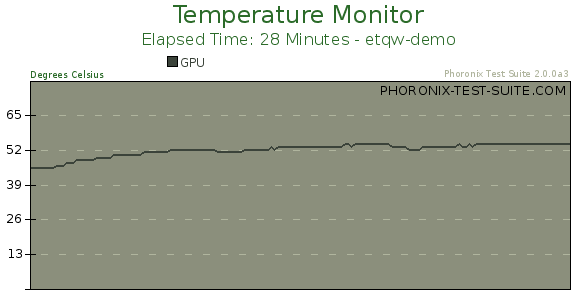NVIDIA ION Linux Performance
We began our ION testing adventures by looking at the CPU usage while attempting to playback a 1080p H.264 video file using MPlayer. This test profile can be found in Phoronix Test Suite 2.0 under the video-cpu-usage name. The Phoronix Test Suite recorded the CPU usage on the Jetway-based Intel nettop when it was using X-Video for its video output adapter. X-Video does not transfer much work to the GPU for it to handle during the video playback process and X-Video Motion Compensation had not worked with the software stack and hardware configuration we used. Intel has talked of writing VDPAU support for their Linux driver and improving XvMC, but so far we have not seen any solid movement in this direction. There is also VA-API as a video acceleration API for Linux, but that is not currently supported in the xf86-video-intel driver. On the ZaReason ION system we tested out the NVIDIA video playback when using X-Video and then when enabling VDPAU for the video codec and video output.

As you can see from the above graph, VDPAU does a great deal for allowing the Intel Atom processor to cope with HD video playback. This low power consumption computer was able to playback videos at 1920 x 1200 on an Acer P243W with ease when using the NVIDIA ION platform with VDPAU. When comparing the X-Video performance between Intel and NVIDIA, the ION-based system generally had a lower CPU consumption rate. Starting out, the NVIDIA X-Video test had a higher CPU saturation, but it quickly recessed to below where the Jetway system was running. NVIDIA's ION platform is clearly superior for video playback than using the Intel graphics and its current level of Linux support.

We next up looked to see whether the NVIDIA ION platform could handle gaming under Linux with the 180.60 proprietary driver. Sure enough, the GeForce 9400M could! We will have frame-rate results later in this article, but first here was the CPU usage when running etqw-demo from the Phoronix Test Suite on the ZaReason system. Sadly, NVIDIA does not allow the GPU load percentage to be monitored, which would have led to interesting results.

We were, however, able to monitor the NVIDIA GPU temperature while running the Enemy Territory: Quake Wars demo test. During this test, the GPU temperature started out around 48°C but rose to around 53~55°C for the duration of the test. The GPU temperature never exceeded this limit.
